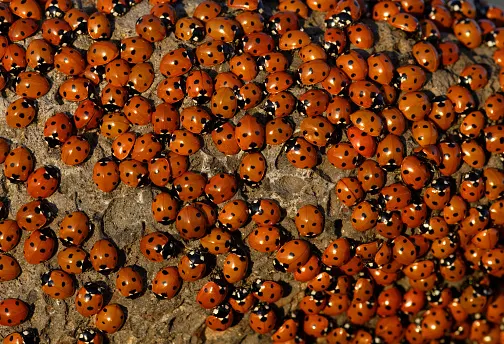
Suspicious swarm lights up radar signal, but what was it?
Radar images make up a big part of how we cover the weather, be it tracking a tornado or following along with freezing rain, but it's not just weather phenomena that make their marks on the radar readout.
Earlier this week, the radar in traditionally-dry extreme Southern California showed a massive blob moving toward San Diego and while there was a cloud in the sky, it wasn't the rainy type.
This cloud? A swarm of ladybugs stretching at least 10 miles wide.
Summer revealed! Visit our Complete Guide to Summer 2019 for an in-depth look at the Summer Forecast, tips to plan for it and much more
Meteorologists at the National Weather Service office in San Diego were initially puzzled at the source of the return. "It looked like echoes reflecting off raindrops, but we weren’t seeing any clouds," forecaster Mark Moede told The Washington Post. The office started to suspect ladybugs were the culprit after contacting a weather observer in the area, who reported the red-and-black beetles were "everywhere."
If the signal really was from ladybugs -- and that's not the only possible explanation, see below -- they wouldn't be the first insects to make a guest appearance on radar. Bird migrations are caught on radar returns from time to time, particularly in the early morning hours when large flocks take to the air all at once.
A few years ago, an immense swarm of migrating butterflies had the same effect on a radar in Colorado.
The office there first suspected birds were the culprit, since the kind of coherent radar signature produced requires, as they put it, "things with large wings, moving in the same direction as the wind."
But ladybugs aren't known for their large wings. So does that does call the San Diego hypothesis into question?
Maybe.
Smaller insects have registered a radar signal before when they appear in large enough numbers. In 2015, millions of mayflies turned up on Cleveland-area radar as they invaded from Lake Erie. So if there were enough ladybugs in this 'bloom', they may have been packed closely-enough together to appear as a moving swath. The effect is quite similar to the suspected ladybug swarm.
According to observer reports, while the cloud itself was about 80 miles by 80 miles in size, the most concentrated mass was only about 10 miles across.
Given the proximity to several air force installations in the area and the direction of the winds, however, another source of the signal might be chaff. Speaking to The Washington Post, Moede agreed it was possible that's what the radar was picking up -- bits of aluminum dispersed by the military to conceal aircraft movements from tracking.
If it was ladybugs, this kind of migration wouldn't be out of the ordinary for them. According to The LA Times, California is home to about 200 species of ladybugs, including the convergent lady beetle which migrates from the Sierra Nevada mountains in early spring to feast on aphids and lay eggs. In early summer, when there are no aphids left to munch on, they head for the hills once again.










